Original Author: Evan HatchFounder @ worlds.org
Original Translator: Liam
Original Source: TECHUBNEWS
On October 3, according to foreign media reports, documentary director Cullen Hoback and HBO recently announced that the documentary "Money Electric: The Bitcoin Mystery" will reveal the true identity of Bitcoin's creator "Satoshi Nakamoto." This statement has sparked significant attention and discussion in the industry. Some have even stated, "Cullen Hoback's discovery will shock the world, even the U.S. elections."
Cullen Hoback stated on social media platform X yesterday, "Some of you may be wondering why I've disappeared. Well, I'm investigating another missing person. Curious about who the mastermind behind Bitcoin is? 'Money Electric: The Bitcoin Mystery' will be revealed on Tuesday. It will be a rollercoaster ride."
Hoback also mentioned, "Given the expected performance of the design market, I won't spoil too many details, as there are only a few days left until the release."
According to data from Polymarket, as the identity of Satoshi Nakamoto is about to be revealed, the confidence of bettors is mixed. Polymarket traders estimate that HBO's latest documentary may link Len Sassaman to the creation of Bitcoin.
Currently, bettors on Polymarket are more optimistic about Len Sassaman rather than Hal Finney being the potential Satoshi Nakamoto. Sassaman currently leads with a 49% probability, while Finney's odds are at 14%. Hoback stated, "I won't participate in the bets, but I can confirm that we will identify a specific name."
Cryptographer Len Sassaman was known for developing privacy tools such as PGP and Mixmaster. His commitment to privacy and decentralization aligns closely with the core principles of Bitcoin.
Sassaman unfortunately passed away shortly after Satoshi Nakamoto's disappearance in 2011, leading to speculation about the possibility that the two might be the same person. Since December 13, 2010, Satoshi Nakamoto has not been online again.
Meanwhile, there is speculation that Hal Finney might be Satoshi Nakamoto, as Finney was the first person to download and run the Bitcoin software after Nakamoto. In January 2009, Finney also received the first Bitcoin transaction from Nakamoto, establishing a direct connection between them.
Finney's early involvement in Bitcoin and its community has fueled speculation that he is the creator of Bitcoin. One theory suggests that Finney concealed his identity to protect his privacy and avoid government scrutiny.
In addition to Sassaman and Finney, other potential candidates for Satoshi Nakamoto exposed by HBO include renowned computer scientist and cryptographer Nicholas Szabo and Blockstream CEO Adam Back.
Previously, according to a UK court ruling, Craig Wright is not Satoshi Nakamoto, but somehow he appears on the list. His probability is currently at 2%. Elon Musk also participated in the voting, with a probability of less than 1%.
The following article "The History of Crypto-Punks: Len Sassaman and Satoshi" is a nearly 9,000-word piece published in 2021 speculating that Len Sassaman, as a scholar living in Belgium, is Satoshi Nakamoto. Both his daily routines and posting content align closely with the timeline during which Satoshi Nakamoto created Bitcoin.
I hope this article inspires readers. For reference only. Below is the full text of the article.
We have lost too many hackers to suicide. What if Satoshi Nakamoto was one of them?
Every node on the Bitcoin network embeds an obituary. It is a hacked transaction data memorializing Len Sassaman, who is essentially immortalized in the blockchain. In many ways, this is a fitting tribute.
Len was a true crypto-punk—talented, unconventional, and idealistic. He dedicated his life to defending personal freedom through cryptography, serving as a developer of PGP encryption and open-source privacy technologies, and working as an academic cryptographer researching P2P networks under the guidance of blockchain inventor David Chaum.
He was also a pillar of the hacker community: a friend and influencer to many important figures in the history of information security and cryptocurrency.
I. The Loss of Satoshi Nakamoto
Len was said to be on track to become one of the most important cryptographers of his time. But after a long struggle with depression and functional neurological disorders, he tragically took his own life on July 3, 2011, at the age of 31.
His death coincided with the disappearance of the world's most famous crypto-punk: Satoshi Nakamoto. Just two months before Len's death, Nakamoto sent their last communication:
- "I have moved on to other things and may not be here again in the future."
In the span of a year, Nakamoto submitted 169 code changes, made 539 posts, and then vanished without explanation. They left behind a large number of unfinished features, intense debates about their vision for Bitcoin, and a fortune of 64 billion dollars in BTC that remains untouched to this day.
We have lost too many hackers to suicide. Aaron Swartz, Gene Kan, Ilya Zhitomirskiy, James Dolan. They are all victims of stigma and a pandemic that exacts a toll on technological progress itself. Imagine if the creator of Bitcoin had died before achieving their goals. If this were true, what would they have brought to the world if they had received the care and dignity they deserved?

I am reluctant to speculate on the identity of Satoshi Nakamoto, as discussions about him are often misleading, and sometimes outright foolish and unethical. However, with Craig Wright deceitfully claiming to have created Bitcoin, it is necessary to revisit this topic and discuss the true crypto-punks who created Bitcoin.
Whoever Satoshi Nakamoto is, they "stood on the shoulders of giants"—Bitcoin is the culmination of decades of research and discussion within the crypto-punk community. In this sense, Len is undoubtedly an indirect contributor. However, one cannot help but wonder who wrote the code, ran the first node, and posted under the pseudonym Satoshi Nakamoto.
To synthesize and implement the countless ideas upon which Bitcoin is based, this person or group would need a unique combination of expertise covering public key infrastructure, academic cryptography, P2P network design, practical security architecture, and privacy technologies. They would likely be deeply rooted in the crypto-punk community and closely connected to those who had a significant impact on cryptocurrency. Ultimately, they would need a strong belief and hacker spirit to "roll up their sleeves" and anonymously build a real-world version of ideas that had previously been relegated to the theoretical realm.
As I reflect on Len's life, I see many of the same characteristics, and I believe Len is very likely to have been a direct contributor to Bitcoin.
Given the unprecedented attention cryptocurrency is receiving, I hope to draw attention to an "unsung hero" we owe credit to. I also hope we can reflect on the significant implications of addressing mental illness, particularly functional neurological disorders, which deserve more attention.
II. Origins
Len was a self-taught technical expert even at a young age, with a passion for cryptography and protocol development. Although Len lived in a small town in Pennsylvania, he joined the Internet Engineering Task Force at the age of 18, responsible for the underlying TCP/IP protocols of the internet, later taking on responsibilities for the Bitcoin network.
"Smart, but always a bit quirky," Len was diagnosed with depression in his teens. Unfortunately, he suffered trauma at the hands of a "marginal sadist" psychiatrist, an experience that may have led to distrust of so-called authority figures.
In 1999, Len moved to the Bay Area and quickly became a regular in the Cypherpunk community. He lived with Bram Cohen, the founder of Mojo and Bittorrent, and became a contributor to the legendary Cypherpunk mailing list, where Satoshi Nakamoto first announced Bitcoin. Other hackers remember him as smart and easygoing, chasing squirrels at Cypherpunk meetings, driving a sports car with a "Get Out of Jail Free" card taped to the dashboard in case he was pulled over by the police.
In San Francisco, Len dedicated himself to defending personal freedom and privacy through technology and direct political action. At the age of 21, he made headlines for organizing protests against government surveillance and the imprisonment of hacker Dmitry Sklyarov.
III. Powerful Cryptography
In the early stages of his career, Len became known as an authority in public key cryptography (the foundation of Bitcoin). By the age of 22, he was speaking at conferences and co-founding a public key cryptography startup with renowned open-source activist Bruce Perens.
After the dot-com bubble burst, the startup failed, and Len joined Network Associates, helping to develop the core PGP encryption technology for Bitcoin. During the release of PGP7 in 2001, Len set up interoperability tests for OpenPGP implementations, establishing connections with many important cryptographic pioneers. Len also contributed to the GNU Privacy Guard implementation of OpenPGP and collaborated with PGP inventor Phil Zimmerman to invent a new encryption protocol.
When introducing Bitcoin, Satoshi Nakamoto stated that he hoped Bitcoin could become "something for currency," just as powerful encryption technology (i.e., PGP) is used to protect files.
The previous generation of multi-user time-sharing computer systems faced similar issues. Before powerful encryption technology emerged, users had to rely on password protection… Subsequently, powerful encryption technology began to be used by the masses, and trust was no longer necessary. … Now we should do the same for money.
IV. Hal Finney
At Network Associates, Len worked with Hal Finney to develop PGP. Finney was the second PGP developer and helped create the OpenPGP interoperability RFC 4880 standard. He was also one of the earliest and most important contributors to Bitcoin after Satoshi Nakamoto:
Finney was the first person to contribute to the Bitcoin code and run a Bitcoin node, aside from Satoshi Nakamoto.
Finney was the first recipient of Bitcoin (sent personally by Satoshi Nakamoto).
Finney invented the concept of reusable proof of work, which is the basis for Bitcoin mining.
Even before Bitcoin was released, Satoshi Nakamoto had extensive communication with Finney. In their last blog post, Nakamoto publicly expressed respect for Finney.
It is no surprise that Finney is one of the most popular candidates for Satoshi Nakamoto, despite the implication that Finney fabricated a large number of email interactions with Nakamoto while simultaneously contributing to Bitcoin under both his real name and another pseudonym. After Nakamoto "left" in 2011, Finney continued to work on Bitcoin.
V. Mail Forwarding Systems
Len and Finney shared a very rare and relevant skill: they were both developers of the email forwarding technology that preceded Bitcoin.
The email forwarder, proposed by David Chaum alongside cryptocurrency, is a dedicated server used for sending information anonymously or under a pseudonym. It was very common to use them when submitting to the Cypherpunk mailing list, which itself was built on distributed email forwarders.
Early email forwarders simply hid the sender's identity while forwarding information, while later protocols (like Mixmaster, the most popular email forwarder) relied on decentralized nodes to distribute fixed-size encrypted data blocks over a P2P network. The architecture of Bitcoin is very similar to that of email forwarders, although its nodes transmit transaction data rather than messages. In 1997, crypto-anarchist founder Tim May even proposed a digital currency based on email forwarders.
As a key developer, node operator, and primary maintainer of Mixmaster, Len was an outstanding expert in email forwarding technology. He also implemented similar technologies as a systems engineer and security architect for Anonymizer privacy protection.
Email forwarders are not only direct technological predecessors of Bitcoin but also form the foundation of Bitcoin's ideological history. In the article "Why We Need Email Forwarders," Finney argued that email forwarders are the foundation of an anonymous digital economy.
Email forwarders represent the "underlying idea" of the ability to exchange information privately without exposing one's true identity. In this way, we can conduct transactions, present credentials, and reach agreements without government or corporate databases tracking our every move. One vision of the crypto-punks includes the ability to transact anonymously using "digital cash"… another area where anonymous email plays an important role.
Email forwarder operators were among the first to recognize the demand for cryptocurrency: without anonymous payment methods, email forwarders would have to be funded out of pocket by operators. This brought scalability issues, meaning spam and abuse were ongoing problems. Because of this, many fundamental concepts of cryptocurrencies stem from the need for an abuse-resistant, profit-driven email forwarder:
In 1994, Finney proposed monetizing email forwarders through anonymous "coins" and "cash tokens."
Smart contracts were initially discussed in the context of preventing email forwarder abuse. Nick Szabo published a prescient paper on smart contracts in 1997, specifically mentioning Mixmaster.
Ian Goldberg and Ryan Lackey (whom Len knew) were important figures in the email forwarding community, and they participated in the development of an unfinished cryptocurrency called HINDE in 1998. Ian later created several early ecash clients, while Ryan became the CSO of Tezos.
Thus, Satoshi Nakamoto's second paper on Bitcoin pointed out that paid email sending was the first working use case for Bitcoin.
Initially, it could be used for proof-of-work applications for services that were almost free but not entirely free.
It was already usable for paid email sending. The sending dialog could be resized, and you could enter messages of any length.
VI. Adam Back
In the small email forwarding community, Len intersected with Blockstream CEO Adam Back, who was the first to communicate with Satoshi Nakamoto.
Back's interest in cryptocurrency began with operating email forwarders, for which he created the HashCash proof-of-work system to combat spam and DDoS attacks. Satoshi Nakamoto later used HashCash as the basis for Bitcoin mining.
We know that Len worked directly with Back, listing him as a contributor to research papers and Mixmaster memos. Both were involved in many OpenPGP implementations and were connected in each other's PGP trust networks.
Interestingly, Back himself has hinted that Satoshi Nakamoto might be a developer of email forwarders, noting that developers would "practice their own technology" to participate anonymously in discussions about cryptographic protocols. Unlike many of the Cypherpunks discussed, we know that Len made numerous anonymous contributions to the Cypherpunk mailing list through email forwarders.
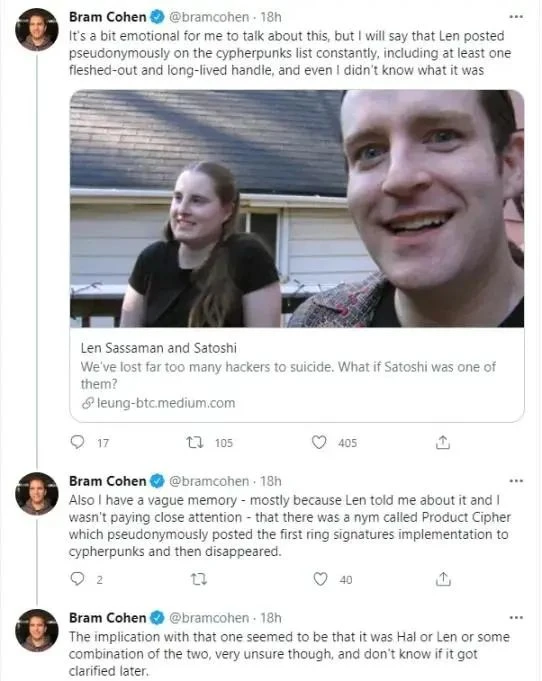
Bram Cohen's response to this article suggests that he and Hal Finney may have collaborated under pseudonyms.
VII. Chaum and COSIC
After graduating from high school, Len worked to support his family and never had the opportunity to attend college. Nevertheless, in 2004, he landed the "ideal job" as a researcher and PhD student in the computer security and industrial cryptography research group COSIC at the Catholic University of Leuven in Belgium.
Len's PhD advisor at COSIC was David Chaum, the "father of digital currency." While Chaum laid the groundwork for the entire crypto-punk movement and all cryptocurrencies, few can say they worked directly with him.
Some of Chaum's relevant achievements include:
He invented cryptocurrency in his 1983 paper "Blind Signatures for Untraceable Payments."
He detailed the code for all elements of blockchain except one in a 1982 paper, which are all elaborated in the Bitcoin white paper.
His company Digicash created the first electronic cash system. Anonymous payments between digital pseudonyms were central to this vision.
"[Chaum] is at the center of what seems to be an unstoppable movement—digitalizing currency… The uncertainty of the digital currency era is anonymity, and David Chaum believes that without anonymity, we will be in trouble."
Although Digicash failed (partly due to reliance on centralized systems), Chaum hoped to create a second digital currency that would provide a combination of anonymity and practicality.
While many viewed its failure as evidence that digital cash was unfeasible, Satoshi Nakamoto defended the "old Chaumian currency" while acknowledging the problems posed by centralization.
Many automatically assume that electronic money is doomed to fail because many companies have gone bankrupt since the 1990s. I hope people understand that it is the centralized control nature of these systems that doomed them to failure.
VIII. Len's Research
Len worked at COSIC in Belgium until his death in 2011. During this time, he published 45 papers and held 20 conference committee positions.
Len's research focused on developing privacy-enhancing protocols with "practical applicability" and working code. His main project (assisted by Bram Cohen) was Pynchon Gate, an evolution of email forwarding technology that allowed for anonymous information retrieval through a distributed node network without a trusted third party.
This work is closely related to Bitcoin— as Pynchon Gate progressed, Len increasingly focused on finding solutions to Byzantine fault tolerance (also known as the Byzantine Generals Problem), which had been a major obstacle for early P2P networks.
In the context of distributed computing, Byzantine fault tolerance refers to the ability of a network to continue functioning normally even when nodes are compromised or unreliable. Byzantine fault tolerance is one of the biggest problems that secure, decentralized cryptocurrencies need to solve without double spending or trusted third parties. Satoshi Nakamoto's most important innovation was the "triple-entry" accounting system, which used the blockchain introduced by Chaum to solve this problem.
During the development of Bitcoin from 2008 to 2010, Len became increasingly active in the field of financial cryptography. He joined the International Financial Cryptography Association, spoke at financial cryptography and data conferences, and served on committees at these conferences. The latter was founded by Robert Hettinga, an early and prominent advocate for digital cash, which was a major topic at the conference.
IX. Satoshi Nakamoto as a Scholar
A wealth of clues suggests that Satoshi Nakamoto was working in academia during the development of Bitcoin, a notion supported by Gavin Andersen, founder of the Bitcoin Foundation.
"I think he was an academic, perhaps a postdoc, maybe a professor, just not wanting to draw attention."
During summer and winter breaks, Satoshi Nakamoto's code contributions and comments surged dramatically, but gradually decreased in late spring and at the end of the year, as scholars had to attend final exams or grading.
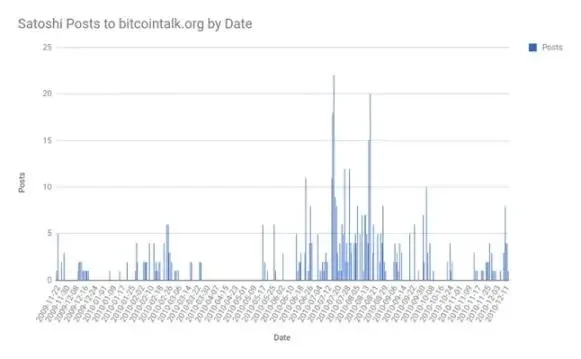
The unique construction of the Bitcoin code also indicates that Satoshi Nakamoto had an academic background. Bitcoin has been described as "brilliant but careless," avoiding traditional software development practices like unit testing, while showcasing cutting-edge security architecture and an expert understanding of academic cryptography and economics.
Whoever did it had a profound understanding of cryptography… they had read academic papers, they had sharp intelligence, and they combined these concepts in a truly novel way.
When renowned security researcher Dan Kaminsky first reviewed Satoshi Nakamoto's code, he attempted to penetrate it with nine different vulnerabilities but was surprised to find that Satoshi had anticipated and patched all of them.
"I thought of some beautiful bugs, but every time I looked at the code, I found a line that solved the problem… I had never seen anything like it."
This may indicate that Satoshi Nakamoto and Kaminsky share a common background in information security experience and expertise. Coincidentally, Len and Kaminsky co-authored and published a paper demonstrating methods for attacking public key infrastructure.
Additionally, the Bitcoin white paper was published in a rare format for the Cypherpunk mailing list—a LaTeX formatted research paper that included academic content such as an abstract, conclusion, and MLA citations. In contrast, other proposals like Bitgold and b-money were unstructured blog posts.
X. Satoshi Nakamoto in Europe
Since COSIC is headquartered in Leuven, Len lived in Belgium during the development of Bitcoin. This is significant because many facts suggest that Satoshi Nakamoto resided in Europe—this was a major focus of an early investigation by The New Yorker.
Satoshi Nakamoto's writing style reflects British English spelling and vocabulary choices, such as "bloody hard," "flat," "maths," "grey," and the dd/mm/yyyy date format. However, Satoshi also mentioned the euro instead of the pound.
The genesis block of Bitcoin also contains the headline from that day's The Times ("Chancellor on brink of second bailout for banks"). This headline was unique to the print edition and was only distributed in the UK and Europe. In 2009, The Times was one of the top ten newspapers in Belgium and was "widely used by scholars and researchers due to its extensive distribution and detailed indexing in libraries."

These clues leave us with a paradox: they suggest that Satoshi Nakamoto is European, but the necessary skills and understanding of the major impacts of Bitcoin are likely to belong to an American. Most members of the Cypherpunk community held joint meetings and gatherings, which is one reason why the proportion of people from the U.S., especially San Francisco, is disproportionately high. Similarly, jobs that provide access to cutting-edge expertise in information security and cryptography are also concentrated in the U.S.
Interestingly, although Len was American, the British English he used was identical to that of Satoshi Nakamoto.
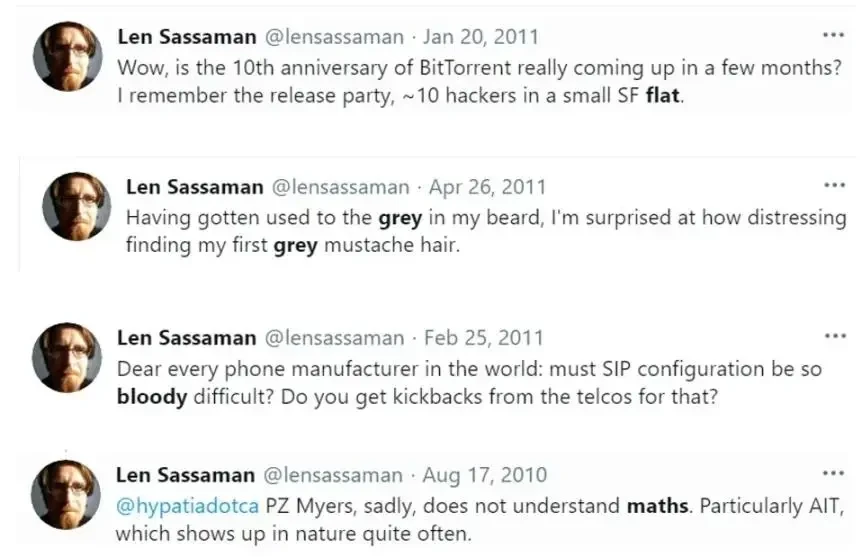
Analyzing Satoshi Nakamoto's posting history reveals that he was a European "night owl," working on Bitcoin after finishing work or school during the day. Satoshi also mentioned that the increase in mining difficulty occurred "yesterday," but if he lived in the U.S., that would not have been the case.
Assuming Satoshi Nakamoto lived a life unrelated to Bitcoin, he would have spent most of his time away from his home computer during work or study hours… If Satoshi lived in the BST time zone, he would have been working mostly at night, often working until the early hours.
When we check Len's tweet history, we find that the timestamps of Satoshi Nakamoto's posts and code submissions closely align with Len's own late-night activities.
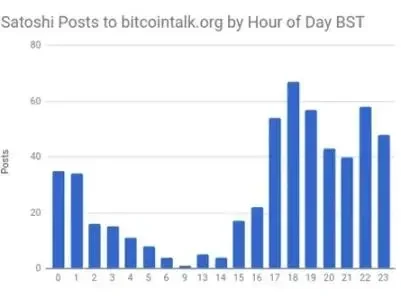
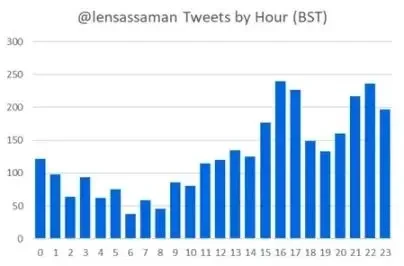
XI. P2P Networks
While Bitcoin is not the first cryptocurrency, it is the first cryptocurrency based on a fully P2P distributed network. Satoshi Nakamoto emphasized the importance of this when he first mentioned Bitcoin:
"I have been working on a new electronic cash system that is completely peer-to-peer, with no trusted third party."
Dan Kaminsky stated that to create Bitcoin, Satoshi Nakamoto needed to "understand economics, cryptography, and P2P networks," and Len had an unusually early and deep understanding of these three disciplines and their applications in digital currency.
During his time in San Francisco, Len lived and collaborated with Bram Cohen, the creator of the most widely used P2P protocol, BitTorrent. During this period (2000-2002), Bram developed a revolutionary P2P network called MojoNation, which used "Mojo tokens" as digital currency, making it one of the first publicly issued digital currencies.
In the P2P economy of MojoNation, "tokens" could be used to exchange file storage, with these files being encrypted and encoded into "blocks" uploaded to a distributed node network hosting a public ledger, reminiscent of Bitcoin's own distributed double-entry accounting system. Mojo was not just an internal accounting token but a complete currency—it could be exchanged for dollars and vice versa. Some early discussions on token economics involved the mechanisms of Mojo tokens.
One unit of Mojo represents a portion of the current functionality of the entire system. If you work for me now, I will give you tokens, and in the future, when the network scales larger, these tokens will represent a larger piece of the pie, thus increasing their value when you spend them.
Satoshi Nakamoto discussed token economics in a very similar way:
"It has the potential to form a positive feedback loop; as the number of users increases, the value will also rise, which can attract more users to take advantage of the growing value."
Despite its foresight, MojoNation's economic model quickly collapsed due to hyperinflation. Satoshi consciously designed Bitcoin to avoid this fate by incorporating built-in deflation and not relying on a central "minting" server.
In 2001, Bram launched BitTorrent. As a P2P alternative to centralized Napster, BitTorrent foreshadowed Bitcoin's own distributed node topology and consensus system, as well as its protocol-level incentive system. BitTorrent innovated not only on a technical level compared to networks like Gnutella but also utilized economic incentives and game theory.
Len foresaw that "BitTorrent would make him greater than [Napster founder] Sean Fanning." Satoshi later referenced Napster when explaining the necessity of a fully decentralized network.
Governments excel at shutting down centralized networks like Napster, but pure P2P networks like Gnutella and Tor seem to maintain their positions.
Coincidentally, both Len and Tor founder Roger Dingledine were involved in the development of the Mixminion email forwarding protocol, co-presenting at Black Hat conferences and co-founding the HotPETS conference.
In 2002, Len and Bram co-founded the CodeCon conference, focusing on "highly practical projects with practical code." At CodeCon 2005, Finney introduced reusable proof of work through a modified BitTorrent client that sent P2P digital currency. One commentator described it as:
"… the world's first transparent server that can facilitate a distributed, collaborative RPOW server world."
Digital currency was a hot topic at the first CodeCon, which included Adam Back's HashCash demonstration and Zooko's introduction of Mnet, the fully open-source and decentralized successor to MojoNation. Mojo was not affiliated with any company and could be independently audited, which Satoshi considered crucial.
MojoNation co-founders Zooko Wilcox and Jim McCoy also became sources of inspiration for Bitcoin and cryptocurrency pioneers. Zooko was one of Satoshi Nakamoto's early collaborators and an employee of David Chaum from Digicash. When Satoshi released Bitcoin v0.1 on Bitcoin.org, he included a link to Zooko's blog. Zooko later founded the privacy-focused major cryptocurrency Zcash. He created the frequently discussed "Zooko triangle" framework.
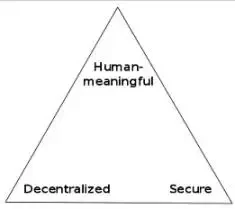
"The Zooko triangle is a trilemma of three properties that participants in a network protocol are typically believed to have."
McCoy is also an important figure in the cryptocurrency space, with Ryan Selkis of Digital Currency Group expressing his belief that McCoy might be Satoshi Nakamoto.
XII. Hacker Activism
Even by the standards of the Cypherpunk community, Len and Satoshi both possess particularly strong ideological beliefs and a commitment to open knowledge.
"I hope you don't talk about me all the time… maybe you can talk about open-source projects and give more credit to your developer contributors."
Satoshi Nakamoto's "hacker activism" approach to distributing Bitcoin through free open-source grassroots projects sharply contrasts with the approaches of their predecessors. Chaum, Stefan Brand, eCash, and others took a completely different approach: applying for patents, forming closed-source venture capital firms, and attempting to drive adoption through corporate partnerships.
This is similar to Len's extensive contributions to open-source projects like PGP, Mixmaster, and GNU Privacy Guard, as well as his rich volunteer experience in groups like the Shmoo Group.
Satoshi hinted at their ideological leanings multiple times, stating that Bitcoin is "very appealing to libertarians" and that it could "win a major battle in the arms race and gain a new territory of freedom in a few years."
Len was equally passionate about defending open knowledge and technological advancement, avoiding interference from corporations and governments.
The pursuit of knowledge is a fundamental component of humanity. In my view, any form of prior restriction is an infringement on our freedom of thought and consciousness. Therefore, I not only hope we can avoid overly restrictive subconscious legislation… I do not want to see anyone establish a framework that could be misused for this purpose.
XIII. Conclusion
Just as Satoshi Nakamoto created Bitcoin under a pseudonym, Len was, in a sense, forced to live under his own role. After an incident in 2006, Len's non-epileptic seizures and functional neurological issues worsened, exacerbating the depression he had struggled with since his youth.
As a victim of stigma, Len "felt he had to maintain the facade of being that super-capable person" and was "very afraid" that his deteriorating health would end his work and disappoint those he cared about.
Despite these challenges, Len continued to work, contributing to papers until a few months before his death, even giving talks at Dartmouth. Tragically, he successfully concealed the severity of his situation from almost everyone in his life.
Few knew how far things had progressed… A phrase I repeatedly heard was, "We never knew; he seemed to be doing well."
Just as Len built upon his previous ideas, people sensed his commitment to creating something that could outlast him, which is one of the reasons he was dedicated to open source and open knowledge.
"This is our legacy, our research and ideas, which will bring knowledge that humanity has never had the opportunity to obtain in history, and we will pass this knowledge on to future generations. We need to ensure that we do not fall into the trap of being unable to share our research results with others, ensuring that these results are not locked away in the vaults of intellectual property lawyers."
Len passed away in 2011, which was a tremendous loss for the Cypherpunk community and the tech world at large, a fact reflected in the outpouring of tributes and sympathy that followed. One comment that impressed me was from "pablos08" in a post on Hacker News.
"I became friends with Len; during that era, we were both conspirators of the Cypherpunk movement, which was still a wild time. We reimagined our world, a world filled with cryptographic systems that would mathematically enforce the freedoms we cherished. Anonymous email relays could protect speech from retaliation; onion routers could ensure that no one could censor the internet; digital cash could enable a completely free economy. We planned to decentralize and distribute everything. We envisioned that the problems we might face in the future would encounter complex and arcane threats—we designed future protocols to withstand these threats. All of this was a geek utopian academic practice. I tended to maintain this state, but Len wanted to practice it firsthand.
Cypherpunks write code."
免责声明:本文章仅代表作者个人观点,不代表本平台的立场和观点。本文章仅供信息分享,不构成对任何人的任何投资建议。用户与作者之间的任何争议,与本平台无关。如网页中刊载的文章或图片涉及侵权,请提供相关的权利证明和身份证明发送邮件到support@aicoin.com,本平台相关工作人员将会进行核查。




